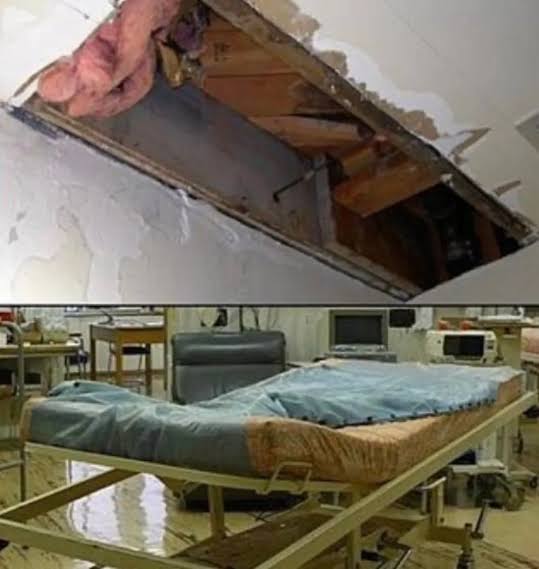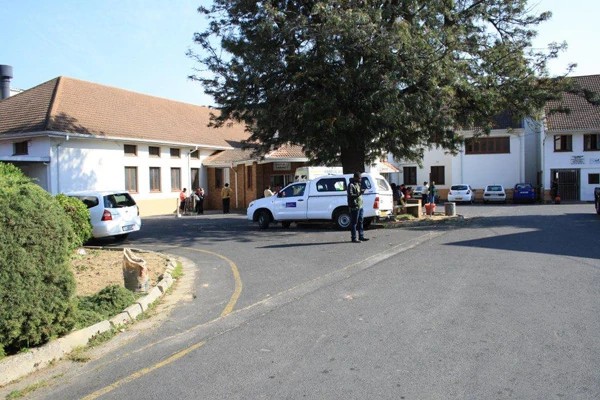Teteteke Gqontsi was 61 years old when he checked into Stellenbosch Hospital for abdominal surgery. He lived in the township of Kayamandi, not far from the hospital itself. He was a father of six. His surgery went as planned, and he was moved to a ward to recover.
According to his brother, Christmas Khethwane, Teteteke could barely move after the procedure. He needed care and was not in any condition to walk unassisted. Nurses were monitoring him. The assumption was that he would be safe.
In the early morning hours of October 5, 2017, a nurse stepped out of his room to get fresh linen. The visit was routine. She had just seen him moments earlier. When she came back, the bed was empty.
There were no signs of movement or struggle. The room was quiet. Teteteke was gone.
The hospital did not raise an alarm or inform the public. For two full days, staff searched for him quietly inside the building. No formal announcement went out. No flyers. No police bulletin. No family notification.
On October 7, the hospital finally contacted the Gqontsi family. The question they asked was strange. They wanted to know if Teteteke had returned home.
His brother was confused. They reminded hospital staff that he had been admitted for surgery and could not have walked out. The family was told he had “left.” With no answers, they rushed to the hospital to look for him themselves.
They searched the facility, walking room to room, speaking with staff, combing the surrounding area. Nothing. The following day, they returned again, this time with the police. Still no sign of Teteteke. One of the nurses stated the last time she had seen him was at 5:15 a.m. on the day of his disappearance. After that, no one had any clear idea of what happened.
For thirteen days, the family heard nothing more. Then, on October 20, a group of maintenance workers at the hospital opened a ceiling panel during renovation work in an isolated area of the building. Inside that dark crawlspace, they found Teteteke’s body. He was curled in a fetal position.

There was no obvious explanation for how he had gotten there. The crawlspace was not easily accessible. There were no ladders. No stairwells leading into it. For someone in his condition, it would have been impossible to climb into the ceiling alone.
The hospital contacted the family again and asked them to return on October 27 to discuss the discovery. They were told an autopsy had been performed. The results were vague but clear on one point—Teteteke had not died from surgical complications. His death was not natural. He had also likely been placed in the ceiling after he died.
The hospital said it was waiting for additional forensic reports and did not share much more. The police opened an investigation. No one was named as a suspect. No one was held accountable.
Teteteke’s brother was left trying to raise money to transport the body to the Eastern Cape for burial. The family, still reeling, had expected a quiet recovery period. Instead, they were handed a mystery and a coffin.

No official report ever explained how Teteteke could have left his bed without being seen. There was no indication of violence. No camera footage has been released. The hospital remained silent on how a man recovering from surgery disappeared inside a locked medical facility and ended up dead in its ceiling.
The Gqontsi family never received a final answer. They were told the death was under investigation, but there were no major headlines. No follow-up stories. No new details in the months that followed. The story faded quietly, kept alive only on smaller forums and a few local news sites.
Later, sites like Mysterious Universe and Paranormal World Wiki took an interest. Their angle was different. They noted the impossibility of the disappearance and began suggesting strange theories. One called the incident a possible case of teleportation. The logic was simple: no one saw Teteteke leave, and no one could explain how he got to where he was found.
To most readers, the theory sounded more like desperation than science. Still, the core problem remained unanswered. If he didn’t walk out, if he didn’t climb up, then how did he end up dead in the ceiling?

No internal staff came forward with information. The nurse who had last seen him was never publicly named. The ceiling space was sealed. His hospital room was reused. And whatever happened in that short window of time when the nurse left the room has never been reconstructed.
What makes the story endure is not just the disappearance but the details around it. Teteteke was in no condition to move. He vanished within minutes. He was found in a space that required effort and access. No alarms went off. No one noticed a body being moved. The space was only checked by chance.
There are few documented cases like this. Hospitals are controlled spaces. Everything is logged. Visitors. Medications. Bed rotations. But this man vanished as if he had never been there, and only by accident was he ever found.
There is no final report, no statement from the hospital CEO, no apology, and no press conference. The family expected care. What they got was silence.
Teteteke Gqontsi’s death remains unexplained. The last place he was seen was in a hospital bed under observation. Thirteen days later, his body was discovered in the ceiling above that same building. The only thing confirmed is that he did not walk there himself.





